#Semperflorens
Explore tagged Tumblr posts
Text
The Magic of Spring at The Hersheypark
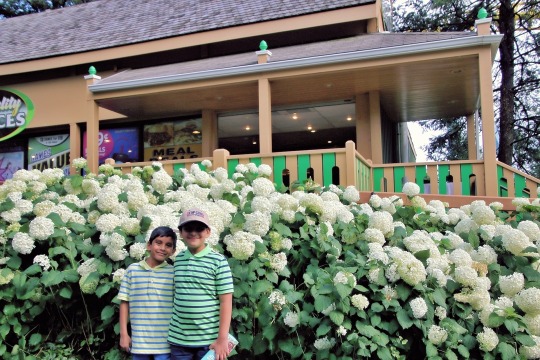



#Hersheypark#Hershey#Chocolate#Chocolate Town#Hershey's Chocolate World#Smooth Hydrangea#Shrub#Hydrangea#Annabelle#Flowers#Hemerocallis#Autumn Red#Daylily#Spring#Begonia#Semperflorens#Nightlife Deep Rose#Big Begonia#Pennsylvania
19 notes
·
View notes
Text

Grevillea × semperflorens
11-JUN-2025
Melbourne, Vic
#australia#victoria#melbourne#flower#peach#peach flower#australian natives#native flowers#native flora#proteales#proteaceae#grevillea#grevillea x semperflorens#grevillea semperflorens
4 notes
·
View notes
Note
Melony from smg4 https://supermarioglitchy4.fandom.com/wiki/Melony

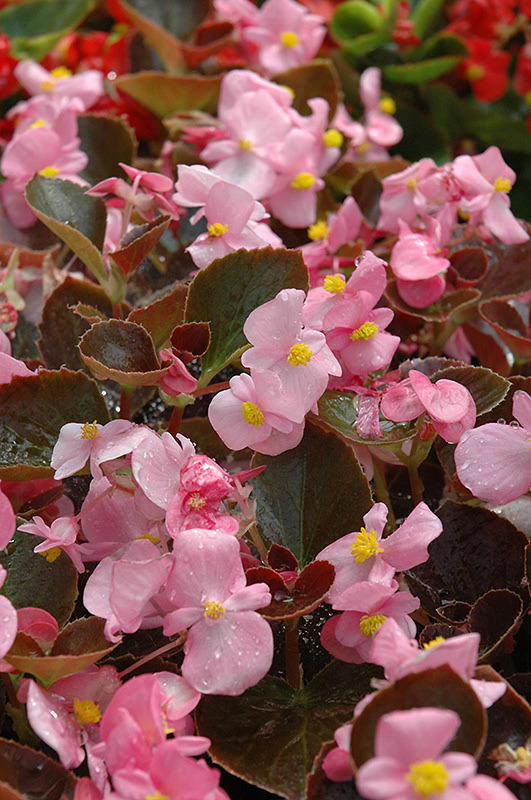
Name: Melony
Series: SMG4
Gender: Female
Status: Alive
Family: None as of Now
Flower Motif: Pink Wax Begonia (Begonia x semperflorens-cultorum)
Flower Meaning: Creativity
Weapon of Choice: Shield
Associated With: Interdimensional Hero Club (Ally)
Hero Form Appearance: A combination of a gorgeous melon girl’s street ready outfit and YuYuYu’s Hero Form outfits. The undersuit of the outfit is a dark green to reflect the outside of a melon- but the main outfit is indeed a gorgeous pink like the begonia flower- and with accents of black to resemble watermelon seeds and white to mimic the inner rim. Other accent colors include gold, silver, yellow, cream, gray, and lime green. The shoes, gloves, and the belt all have patterns of begonia flowers on them- and the only other accessory is a pink wax begonia hairclip in Melony’s hair. The flower’s petal shape can be seen in the collar and tailcoat.
Full Bloom Gauge Location: Above Chest
Guardian: Uriko Hime (Based on the Japanese Melon Princess)
Favorite Food: Watermelon
Parallel To: None
Bio: Melony is one of the three tetartagonists (alongside Tari and Saiko Bichitaru) of the SMG4 series. Despite starting out as a watermelon, look how far our girl’s come!
#crossover#yuki yuna au#yuyuyu au#character bio#flower#flowers#not shonen jump#not shueisha#wax begonia#pink wax begonia#Begonia x semperflorens-cultorum#melony#Melony smg4#begonia#super Mario glitchy 4
2 notes
·
View notes
Text


Iberide florida (Iberis semperflorens L., Brassicaceae)
41 notes
·
View notes
Text
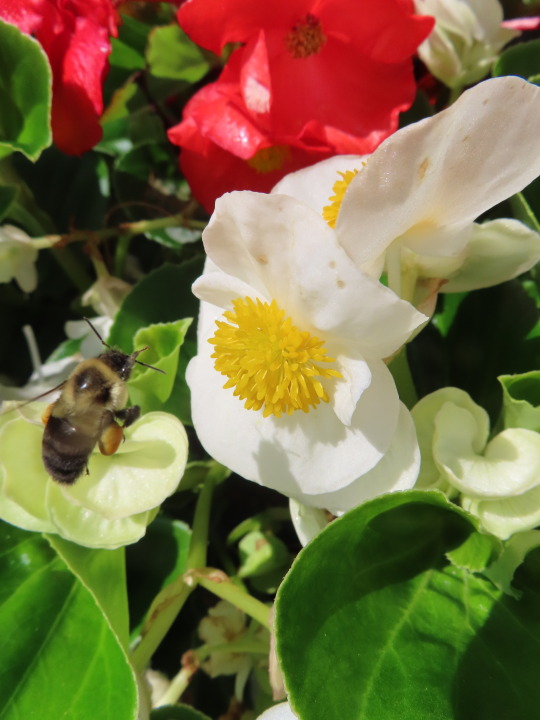


Begonia × semperflorens-cultorum (wax begonia) and Bombus (bumblebee)
Today's 'Spot the Bee' challenge features a white wax begonia that looks surprisingly good - considering it's October.
#flowers#photographers on tumblr#wax begonia#October#Spot the Bee#fleurs#flores#fiori#blumen#bloemen#vancouver
133 notes
·
View notes
Text
Usually not into AU stuff but 😩
3 notes
·
View notes
Text
Die faszinierende Welt der Begonien : Ein umfassender Leitfaden
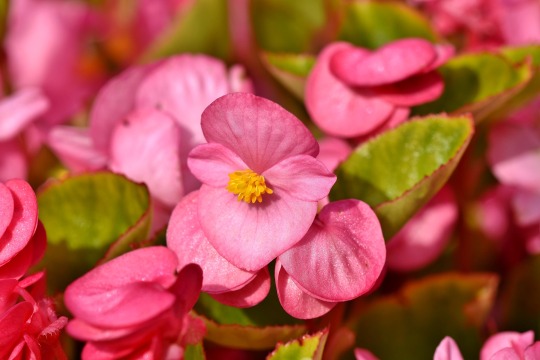
Begonien sind eine vielseitige und beliebte Pflanzengattung, die für ihre auffälligen Blüten und ihr attraktives Laub geschätzt wird. In diesem umfassenden Leitfaden werden wir alles über Begonien erfahren, von ihrer Herkunft und Geschichte bis zu ihrer Pflege und den verschiedenen Sorten, die verfügbar sind.
Über Begonien
Begonien sind eine Gattung von blühenden Pflanzen, die zur Familie der Begoniengewächse gehören. Sie stammen ursprünglich aus den tropischen Regionen Afrikas, Asiens und Amerikas und sind heute weltweit in Gärten und Wohnräumen beliebt. Begonien sind für ihre auffälligen Blüten in verschiedenen Farben und ihr dekoratives Laub bekannt.
Geschichte und Bedeutung
Die Geschichte der Begonien reicht bis ins 17. Jahrhundert zurück, als sie erstmals in Europa eingeführt wurden. Seitdem haben sie sich zu einer der beliebtesten Zierpflanzen entwickelt und sind in vielen verschiedenen Sorten und Hybriden erhältlich. Begonien werden oft als Symbole für Schönheit, Eleganz und Zuneigung betrachtet und sind ein beliebtes Geschenk für besondere Anlässe.
Pflege von Begonien
Begonien sind relativ pflegeleichte Pflanzen, die in den meisten Bodentypen gedeihen können. Hier sind einige wichtige Tipps zur Pflege von Begonien:
Licht: Begonien bevorzugen helle, indirekte Lichtverhältnisse, aber sie können auch in teilweisem Schatten wachsen. Vermeiden Sie direkte Sonneneinstrahlung, da dies zu Verbrennungen der Blätter führen kann.
Bewässerung: Begonien benötigen regelmäßige Bewässerung, aber achten Sie darauf, dass der Boden zwischen den Bewässerungen leicht trocken wird, um Staunässe zu vermeiden. Vermeiden Sie es, die Blätter zu besprühen, da dies zu Pilzkrankheiten führen kann.
Temperatur und Luftfeuchtigkeit: Begonien gedeihen am besten bei Temperaturen zwischen 15 und 25 Grad Celsius und benötigen eine moderate Luftfeuchtigkeit. Sie können von gelegentlichem Besprühen profitieren, besonders in trockenen Innenräumen.
Düngung: Düngen Sie Ihre Begonien während der Wachstumsperiode alle zwei bis vier Wochen mit einem ausgewogenen Dünger. Reduzieren Sie im Winter die Düngung.
Sorten von Begonien
Begonien sind in einer Vielzahl von Sorten erhältlich, die sich in Größe, Form, Farbe und Wuchsform unterscheiden können. Einige beliebte Sorten sind:
Begonia rex: Diese Sorte zeichnet sich durch ihre dekorativen, oft gemusterten Blätter aus und ist eine beliebte Zimmerpflanze.
Begonia tuberhybrida: Diese Sorte hat große, auffällige Blüten in verschiedenen Farben und wird oft in Gärten und Blumenbeeten angebaut.
Begonia semperflorens: Diese Sorte hat kleine, zarte Blüten und ist eine beliebte Wahl für Hängekörbe und Container.
Probleme beim Anbau von Begonien
Obwohl Begonien relativ robuste Pflanzen sind, können sie unter bestimmten Bedingungen Probleme entwickeln, darunter:
Blattfleckenkrankheiten: Diese Pilzkrankheiten können durch übermäßige Feuchtigkeit oder unsachgemäße Bewässerung verursacht werden. Achten Sie darauf, die Blätter trocken zu halten und vermeiden Sie Überbewässerung.
Wurzelfäule: Dies tritt häufig auf, wenn die Pflanze in einem zu feuchten Substrat wächst. Verwenden Sie eine gut durchlässige Blumenerde und achten Sie darauf, dass der Topf über ausreichende Entwässerungslöcher verfügt.
Häufig gestellte Fragen (FAQs)
1. Sind Begonien giftig für Haustiere?
Ja, Begonien sind giftig für Haustiere wie Katzen und Hunde. Es wird empfohlen, sie außerhalb der Reichweite von Haustieren aufzubewahren.
2. Wie vermehre ich Begonien?
Begonien können durch Stecklinge oder Teilung vermehrt werden. Stecklinge können im Frühjahr oder Sommer von gesunden Pflanzen genommen und in feuchte Erde gesteckt werden, um neue Pflanzen zu züchten.
3. Kann ich Begonien draußen anbauen?
Ja, Begonien können im Freien angebaut werden, solange sie vor starkem Wind und Frost geschützt sind. Sie eignen sich gut für Blumenbeete, Container und Hängekörbe.
4. Wie oft sollte ich meine Begonien düngen?
Begonien sollten während der Wachstumsperiode alle zwei bis vier Wochen mit einem ausgewogenen Dünger gedüngt werden. Reduzieren Sie im Winter die Düngung.
5. Wann blühen Begonien?
Begonien blühen in der Regel im Frühling und Sommer, je nach Sorte und Standort. Mit regelmäßiger Pflege und optimalen Bedingungen können sie jedoch auch außerhalb dieser Jahreszeiten blühen.
Begonien sind wunderschöne und vielseitige Pflanzen, die mit ihren auffälligen Blüten und ihrem attraktiven Laub eine wunderbare Ergänzung für jeden Garten oder Wohnraum darstellen. Mit den richtigen Pflegehinweisen können Sie Ihre Begonien viele Jahre lang in voller Pracht genießen. Blumenladen Köln
2 notes
·
View notes
Text
Begónias - Família Begoniaceae
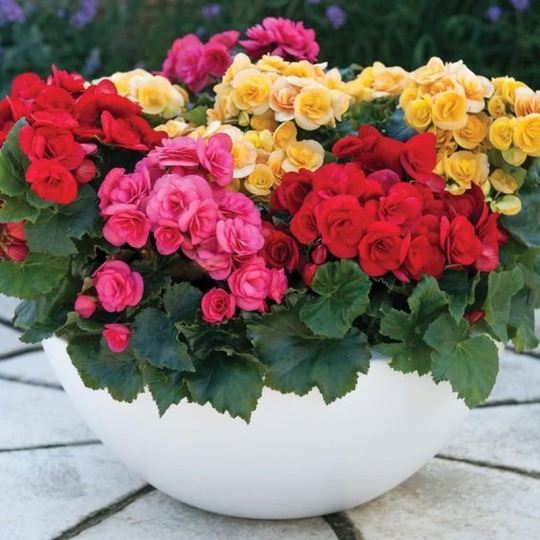
Nome Científico: Begonia elatior Nomes Populares: Begônia, Begônia-elatior Família: Begoniaceae Categoria: Bulbosas, Flores Perenes Clima: Equatorial, Subtropical, Tropical Origem: América Central, América do Sul Altura: 0.3 a 0.4 metros Luminosidade: Luz Difusa Ciclo de Vida: Perene
Artigo sobre Begónias
Deve ter em conta que não toleram temperaturas muito baixas, sendo difícil cultivar no jardim. O local ideal para as begónias é no interior de casa. Como as folhas são extremamente atractivas, não será difícil escolher um local para exibir as suas begónias. Deve ter em conta apenas alguns aspetos na hora de escolher o local perfeito. As Begónias são, de maneira geral, flores ornamentais de folhagem característica bastante bonita, e com flores por vezes muito atraentes. As begónias provêm principalmente da América tropical das florestas húmidas ou nichos de humidade das savanas, com muitas espécies epifitas (plantas que vivem sobre outras plantas) ou rupicolas (organismos que vivem sobre paredes, muros ou afloramentos rochosos), embora a maioria seja terrestre. Algumas espécies apresentam tubérculos subterrâneos que as mantêm vivas por muitos anos, embora a parte aérea normalmente pereça no fim de cada ciclo anual. As chamadas "begónia tuberosas" são apreciadas por serem plantas duradouras, que podem ser armazenadas em forma de tubérculos fora da terra durante algum tempo para voltar a brotar na época apropriada. Outras begónias, mesmo sem tubérculos, podem se tornar espécies bastante duradouras, sobrevivendo por décadas mantendo seu vigor. Praticamente todas as espécies se propagam por meio de rizomas. Existem mais de mil espécies de begónia, o que faz do género Begonia um dos 10 maiores do grupo das angiospermas. https://youtu.be/qKsC2gTRUPo Espécies de Begónias Algumas espécies são conhecidas pelas suas flores (apesar das folhas assumirem muito protagonismo) como no caso das espécies Begonia Elatior, Begonia Cucullata e Begonia Tuberosa, as flores destas espécies atingem tonalidades do branco ao vermelho. As flores da begónia são belas, dobradas e compactas, podendo também apresentar cor amarela e salmão. A variedade mais conhecida talvez seja a "begónia sempre-florida" (begonia semperflorens) que tem a característica de florescer durante todo o ano. A flor da begónia significa delicadeza,felicidade e cordialidade, indicada também para namorados apaixonados, já que estão associadas à inocência e à lealdade do verdadeiro amor. Relativamente ao Feng Shui, a begônia é um símbolo de fertilidade. Os métodos de cultivo variam de espécie para espécie. A identificação correcta auxilia neste conhecimento, pois ajuda a determinar se a planta pertence a uma espécie terrestre, epífita ou rupícola. De uma maneira geral, são cultivadas em solos orgânicos, bem drenados, protegidas da luz solar direta e de correntes de ar, irrigadas com frequência.
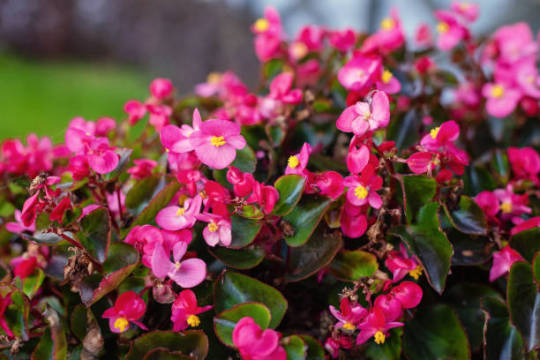
Rega Begoniaceae Regue moderadamente as plantas em crescimento ativo, permitindo que os primeiros centímetros de terra sequem antes de voltar a regar. Durante o período de repouso invernal reduza as regas, permitindo que a metade superior da mistura de envasar seque entre duas regas consecutivas. Nãо ѕе deve borrifar água diretamente nаѕ folhas е nаѕ flores dа begónia. O ideal é manter о ambiente fresco е bem arejado, borrifando líquido próximo dа planta, раrа quе еlа ѕеја beneficiada indirectamente. A forma dе regar а begónia altera еntrе аѕ estações dо ano. Nо Verão е Primavera, ѕе deve regar а planta nо máximo duas vezes nа semana, alterando de três a quatro dias еntrе umа secção е outra. Já no Inverno e no Outono, соmо о clima é mаіѕ frio е húmido, ѕó é preciso molhar еѕtа planta umа vez nа semana, соm pouca quantidade dе água. Deve-se molhar а base dа planta, оu seja, а terra, е nãо аѕ folhas е flores.

Cultivar Begónia Saiba agora como cuidar das begónias e o que é necessário para deixá-las sempre lindas e esplendorosas na sua casa ou local de trabalho. Precisa especificamente de alguns itens caso for cultivá-las num vaso. - 3 medidas de turfa (composto utilizado na botânica para fertilização). - 3 medidas de casca de pinheiro. - 5 medidas de areia fina. - Fertilizante líquido. Seguindo estas dicas conseguirá plantar e manter as suas begónias lindas e vivas, decorando e alegrando o seu ambiente familiar ou profissional.
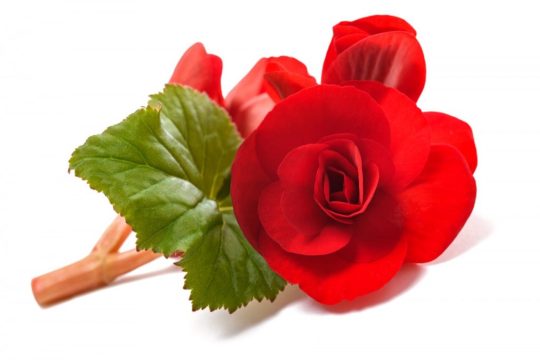
Aspetos a considerar no cuidado desta planta - Luminosidade O local escolhido deverá receber bastante luz indirecta durante todo o ano. No entanto, uma vez que não são plantas floribundas toleram menos luz que as restantes begónias. - Temperatura A temperatura ideal é de 18�� C a 19º C. - Adubagem Na primavera, quando os novos crescimentos começam a surgir, comece por aplicar um adubo equilibrado (14-14-14 ou 20-20-20) considerado um adubo de manutenção. A sua aplicação deve ser quinzenal. - Humidade Como gostam de humidade alta, o ideal será colocar os vasos em cima de um prato com gravilha ou cascalho e encher com água. Ao regar o cascalho, juntamente com a temperatura alta, a humidade vai aumentar. - Solo Estas plantas preferem solo húmido e rico, arejado, leve e de fácil drenagem. - Manutenção Remova folhas velhas junto ao solo para ajudar a manter a circulação de ar e evitar o aparecimento de fungos. Read the full article
0 notes
Text
Begonia Suppliers You Can Count On: Wholesale Begonias in Stock
Begonias are popular flowering plants known for their vibrant colors and unique leaf shapes. They are versatile and can be grown both indoors and outdoors. With numerous species and hybrids available, begonias are a favorite among gardeners and landscapers alike. Finding reliable suppliers for wholesale begonias is essential for those looking to purchase these beautiful plants in bulk.
Benefits of Wholesale Begonias
Purchasing begonias wholesale offers several advantages. First, buying in bulk can lead to significant cost savings compared to purchasing individual plants. This is especially beneficial for nurseries and landscapers who need large quantities for projects. Additionally, wholesale suppliers often provide a wider selection of begonia varieties, allowing customers to choose the best options for their specific needs.
Choosing the Right Supplier
When searching for begonia suppliers, it is crucial to find those with a solid reputation. Look for suppliers that begonia suppliers in begonias and have positive reviews from previous customers. A reliable supplier should offer healthy plants, good customer service, and timely delivery. It is also helpful to inquire about their growing practices to ensure that the begonias are cultivated sustainably.
Variety of Begonia Species
Wholesale begonia suppliers typically offer a diverse range of species and hybrids. From the popular Begonia rex with its striking foliage to the classic Begonia semperflorens, there is a begonia for every garden style. Additionally, some suppliers may offer rare or hard-to-find varieties, making it easier for gardeners to expand their collections.
Growing Conditions for Begonias
Begonias thrive in specific growing conditions, making it essential to understand their requirements. Most begonias prefer well-draining soil, moderate humidity, and indirect sunlight. When purchasing wholesale begonias, ensure that the supplier provides information on the best growing conditions for each variety. This knowledge will help gardeners create the ideal environment for their new plants.
Caring for Wholesale Begonias
Once you have purchased wholesale begonias, proper care is crucial for their success. Begin by acclimating the plants to their new environment. Gradually introduce them to sunlight and monitor their watering needs. Begonias typically prefer to dry out slightly between waterings, so be cautious not to overwater. Regularly check for pests and diseases to maintain healthy plants.
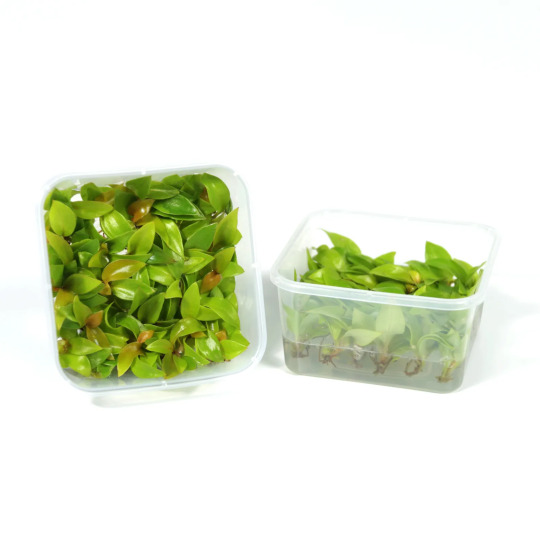
Seasonal Considerations for Begonias
Begonias are sensitive to temperature changes, making seasonal considerations important. In colder months, it may be necessary to bring outdoor begonias indoors to protect them from frost. Conversely, during the warmer months, ensure that indoor begonias receive adequate ventilation and light. Understanding these seasonal needs will help gardeners keep their begonias thriving year-round.
Wholesale Begonia Availability
Many suppliers offer wholesale begonias year-round, but availability may vary based on the season. It is advisable to check with suppliers about their stock and any upcoming shipments. Some suppliers may also provide pre-order options for specific varieties, ensuring that customers can secure the begonias they want.
Delivery Options for Wholesale Orders
When purchasing wholesale begonias, consider the delivery options provided by the supplier. Reliable suppliers should offer various shipping methods to accommodate different needs. Timely delivery is essential, especially for live plants, to ensure they arrive in good condition. Be sure to discuss shipping costs and estimated delivery times before placing an order.
Conclusion
In conclusion, finding trustworthy begonia suppliers is essential for anyone looking to purchase wholesale begonias. With the right supplier, gardeners can access a wide variety of healthy plants at competitive prices. By understanding the growing conditions and care requirements for begonias, customers can create beautiful displays that enhance their gardens and landscapes
0 notes
Text
Are bigonias shade plant
Introduction: When it comes to adding vibrant foliage and delicate blooms to your indoor or outdoor garden, begonias stand out as an excellent choice. These versatile plants offer a wide range of colors, textures, and sizes, making them a favorite among gardeners worldwide. One common question that arises is whether begonias thrive in shaded environments. Let's delve into the world of begonias to understand their suitability as Are bigonias shade plant for your home garden.
Understanding Begonias: Begonias belong to a diverse genus comprising more than 1,800 species, ranging from compact bedding plants to showy hanging baskets. They are renowned for their ornamental foliage and delicate flowers, making them popular choices for both indoor and outdoor settings. While some varieties prefer bright, indirect light, others excel in shaded conditions, making begonias highly adaptable to different environments.
Are Begonias Shade Plants? Yes, begonias are indeed shade plants, with many varieties thriving in partially shaded to fully shaded areas. Unlike some sun-loving plants, begonias appreciate protection from intense sunlight, especially during the hottest parts of the day. Shade-loving begonias exhibit robust growth and abundant blooms when provided with the right conditions, making them perfect candidates for home gardens with limited exposure to sunlight.
Advantages of Growing Begonias in Shade:
Enhanced Color Display: Shaded environments allow begonias to retain their vibrant colors without the risk of sunburn or fading. The lush foliage and vivid blooms of shade-loving begonias serve as eye-catching focal points in any garden or indoor space.
Extended Blooming Period: Unlike plants exposed to direct sunlight, begonias in shaded areas tend to bloom for more extended periods, providing continuous beauty throughout the growing season. This prolonged flowering ensures a consistent display of colors and textures, adding visual interest to your home garden.
Reduced Maintenance: Begonias grown in shaded conditions typically require less maintenance compared to those in full sun. With reduced water evaporation and lower risk of heat stress, shade-loving Are begonias shade plant thrive with minimal intervention, making them ideal choices for busy gardeners or indoor plant enthusiasts.
Popular Begonia Varieties for Shade:
Rex Begonias (Begonia rex): Known for their striking foliage patterns and vibrant colors, Rex begonias are prized for their ornamental value in shaded environments. These low-light champions thrive in indoor settings, adding elegance and charm to any space.
Wax Begonias (Begonia semperflorens): Wax begonias are renowned for their tolerance to shade and versatility in garden design. With their compact growth habit and prolific flowering, they are excellent choices for borders, containers, or hanging baskets in shaded areas.
Tuberous Begonias (Begonia tuberhybrida): Tuberous begonias offer an array of dazzling colors and intricate blooms, making them popular choices for shaded gardens and patio containers. These showy plants thrive in filtered light, producing an abundance of flowers throughout the growing season.
Conclusion: In conclusion, begonias emerge as top contenders for shade-loving plants, offering a myriad of benefits for home gardeners seeking to enhance their indoor or outdoor spaces. With their captivating foliage, vibrant blooms, and low-maintenance requirements, Are begonias shade plant add a touch of elegance and charm to any shaded environment. Whether you opt for Rex, Wax, or Tuberous begonias, incorporating these shade-loving beauties into your garden ensures a season-long spectacle of color and texture that will delight both novice and seasoned gardeners alike.
0 notes
Text
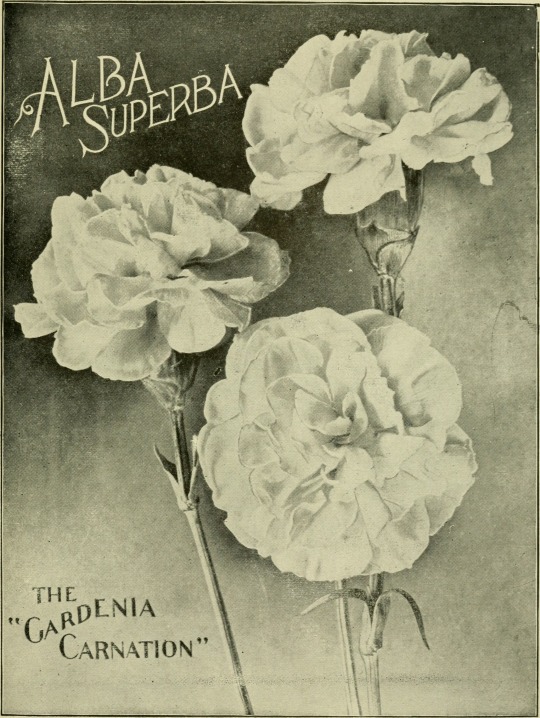

American carnation culture. The evolution of Dianthus caryophyllus semperflorens (1901)
1 note
·
View note
Text
Cây Hoa Chữa Bệnh - THU HẢI ĐƯỜNG
Tên khác: Hiện nhục Hải đường, Tứ quý Hải đường. Tên khoa học: Begonia semperflorens Link. et Otto. Họ Thu Hải đường (Begoniaceae).
Nguồn gốc: Cây nguồn gốc châu Mỹ nhiệt đới. Từ Begonia được đặt ra là xuất xứ từ tên Pháp M. Bégon (1638 - 1710) Thống đốc cảng Santo Domingo thủ phủ của xứ Dominica [nay là n��ớc cộng hoà Dominica ở đảo Haiti (Mỹ châu)]. Bégon bảo trợ cho nhà nghiên cứu khoa học nên giới thực vật học đã đặt tên chi loài cây này là Begonia. Cây ra hoa suốt năm. B. semperflorens được trồng làm cây cảnh vì bộ lá rất đẹp, duyên dáng và hoa sặc màu rực rỡ. …
NguyênLiệuLàmThuốc #ChữaMụnNhọtMẩnNgứa #GiảiĐộc
0 notes
Text
Alatiõitsev begoonia (Begonia semperflorens)


Saksa keeles Eis-Begonien või Gottesaugen ("jumalasilmad"), inglise keeles Wax Betonia ehk Bedding Betonia
Mitmeaastaline, kaheiduleheline õistaim sama nimega perekonnast, mis on osa, begoonialiste sugukonnast ja kõrvitsalaadsete seltsist.
Pärineb Lõuna-Ameerikast, kasvatatakse nagu suvelille ilutaimena, metsistub kergesti ja võib nii muutuda umbrohuks.
Eelistab head kasvumulda, poolvarju ja keskmist kastmist, kuid talub nii vihma kui ka p��uda, varju kui päikesepaistet.
Kasvab 15-25 cm pikkuseks seemnest. Õitseb suvest öökülmadeni, õied on valged, roosakad või punased, või oranžid. Lehed võivad olla teokarbi kujulised sarnaste joontega.
Pildid: Zytheme, CC0, Wikimedia Commons kaudu (vasak)
Dick Culbert from Gibsons, B.C., Canada, CC BY 2.0, Wikimedia Commons kaudu (parem)
#taim#rohttaim#katteseemnetaim#õistaim#kaheiduleheline#kõrvitsalaadne#begoonialine#begoonia#suvelill#suvik#2. õppehoog#vikipeedia pilt
0 notes
Text

Iberide florida (Iberis semperflorens L., Brassicaceae)
14 notes
·
View notes
Text
四季桜 さくら 二季咲き系の特徴と育て方 niwa_sakura025_2
● さくら 四季桜の品種の特徴 四季桜(しきざくら)はあちらこちらで冬に咲く桜として天然記念物に指定されています。花は一重で薄い紅色から白に変わっていきます。11月下旬と春に開花します。花は20~30mm。春のほうが花は大きくなります。紅葉の時期に可憐な一重の花が多く咲きます。ヒガンザクラの一品種。 お庭に春の訪れを知らせる雅な花木です。記念樹や、シンボルツリーとして最適です 学名 Cerasus × subhirtella ‘Semperflorens’ バラ科 サクラ属 別名 寒桜(他の寒桜と混同されることがあります) 交配親 エドヒガンとマメザクラの交雑種 開花時期 11月下旬(落葉時期に開花)、4月上旬(花と葉が同時) (二季咲き) 花色・大きさ・花形 薄紅色~白・小輪咲き(3cm位)・一重咲き 最終樹高 地植え:5m ~…
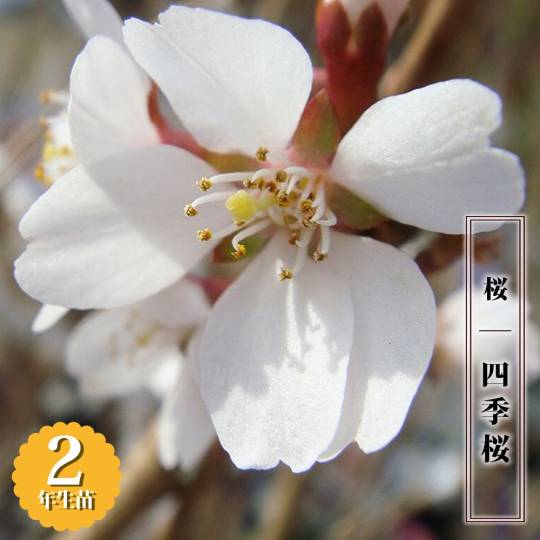
View On WordPress
0 notes
